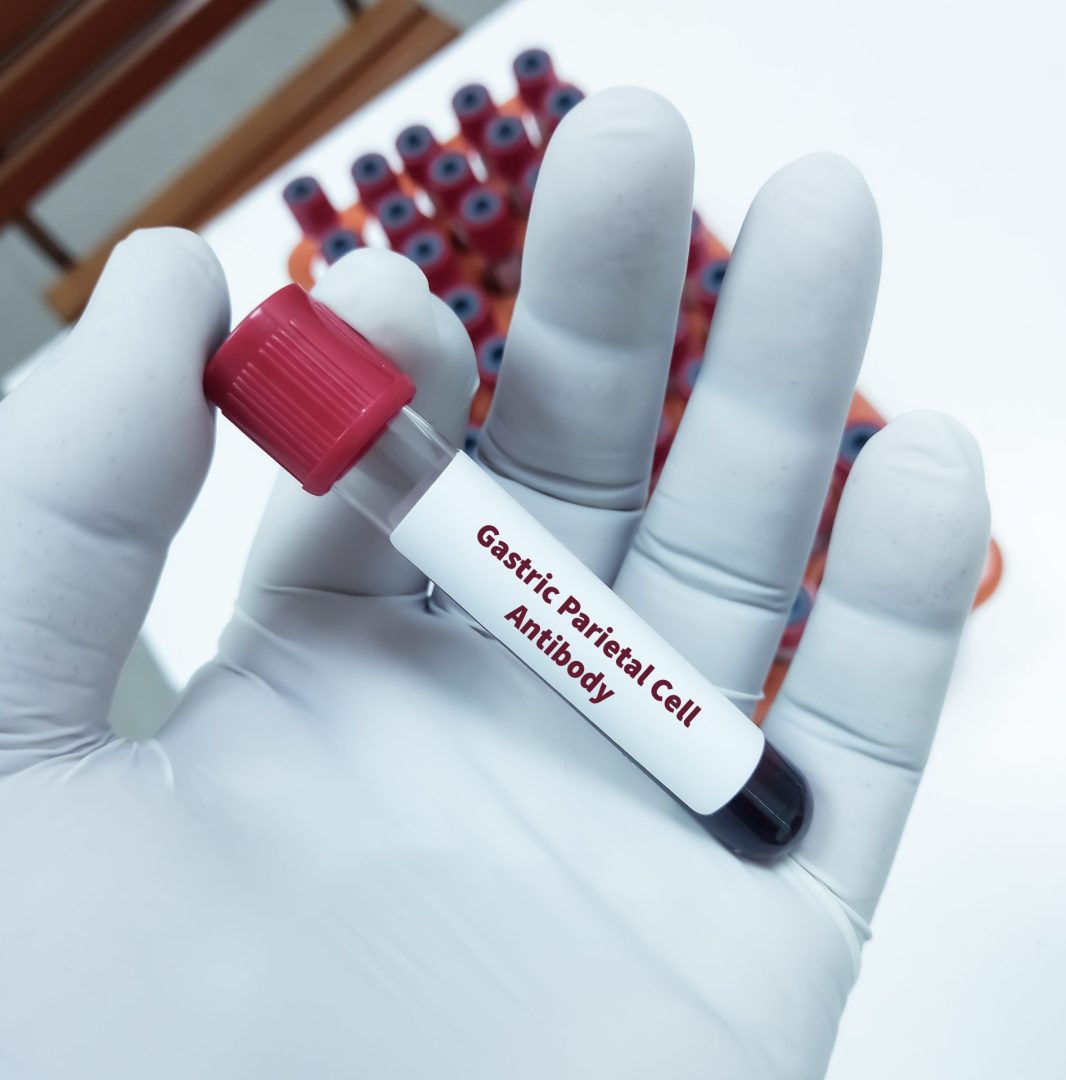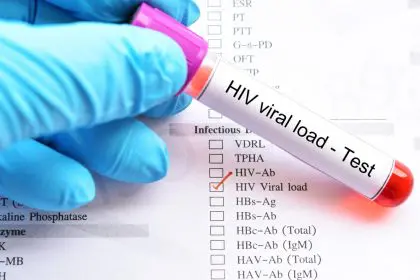A dangerous stomach condition is silently affecting millions of Americans, often developing for years without obvious symptoms until serious complications emerge. Atrophic gastritis represents one of the most overlooked digestive health threats, capable of destroying the stomach’s protective lining while significantly increasing the risk of gastric cancer and other life-threatening complications.
This chronic inflammatory condition attacks the stomach’s essential protective cells, gradually thinning the lining that serves as the first line of defense against digestive acids and harmful bacteria. The insidious nature of atrophic gastritis means that many people remain completely unaware of their condition until irreversible damage has already occurred.
The condition affects diverse populations differently, with certain ethnic groups facing disproportionately higher risks due to genetic factors and environmental exposures. Understanding these risk patterns and recognizing early warning signs becomes crucial for preventing the serious health consequences that can develop when atrophic gastritis progresses unchecked.
Medical professionals consider atrophic gastritis a precancerous condition, meaning that early detection and proper management can literally be lifesaving. The transformation from healthy stomach lining to cancerous tissue often follows a predictable progression that can be interrupted with appropriate medical intervention.
Warning sign number 1: Persistent unexplained fatigue and weakness
The most commonly overlooked symptom of atrophic gastritis involves persistent fatigue that doesn’t improve with rest or lifestyle changes. This exhaustion stems from the condition’s impact on nutrient absorption, particularly vitamin B12, which plays a crucial role in energy production and neurological function.
Unlike normal tiredness that people experience after physical exertion or insufficient sleep, atrophic gastritis-related fatigue feels overwhelming and constant. Individuals often describe feeling drained even after a full night’s rest, struggling to maintain their usual activity levels despite getting adequate sleep and nutrition.
The fatigue associated with this condition often develops so gradually that people adapt to feeling tired, assuming it’s a normal part of aging or stress. This adaptation makes the symptom easy to dismiss, allowing the underlying stomach damage to progress while the person attributes their exhaustion to other life factors.
The energy depletion occurs because the damaged stomach lining cannot produce adequate amounts of intrinsic factor, a protein essential for vitamin B12 absorption. Without sufficient B12, the body cannot effectively create healthy red blood cells or maintain proper nerve function, leading to the overwhelming fatigue that characterizes this condition.
Warning sign number 2: Unexplained shortness of breath during normal activities
Shortness of breath that occurs during routine activities like climbing stairs, walking short distances, or performing household tasks can indicate the anemia that frequently accompanies atrophic gastritis. This symptom often develops gradually, making it easy to attribute to aging or poor physical fitness rather than an underlying medical condition.
The breathing difficulties arise when damaged stomach lining leads to decreased iron absorption or chronic microscopic bleeding, both of which can cause anemia. As red blood cell counts drop, the body struggles to deliver adequate oxygen to tissues, forcing the respiratory system to work harder during normal activities.
Many people experiencing this symptom initially assume they need to exercise more or lose weight, not realizing that their breathing problems stem from a digestive condition affecting their stomach lining. This misattribution can delay proper diagnosis and treatment while the underlying gastritis continues to worsen.
The shortness of breath associated with atrophic gastritis tends to worsen gradually over time, eventually affecting increasingly basic activities. People may notice they need to rest after walking distances they previously covered easily, or they might feel winded after simple tasks like carrying groceries or climbing a single flight of stairs.
Warning sign number 3: Heart palpitations and irregular heartbeat sensations
Heart palpitations represent another frequently misunderstood symptom of atrophic gastritis, occurring when anemia forces the heart to work harder to pump oxygen-depleted blood throughout the body. These sensations can range from mild fluttering to pronounced pounding that becomes noticeable during rest periods.
The cardiac symptoms develop as the heart attempts to compensate for reduced oxygen-carrying capacity in the blood. When red blood cell counts drop due to nutrient malabsorption or microscopic bleeding in the damaged stomach lining, the heart responds by beating faster and more forcefully to maintain adequate circulation.
Many people experiencing these heart sensations worry about cardiac disease, leading them to seek cardiology consultations while the underlying stomach condition remains undiagnosed. While cardiac evaluation is always appropriate for heart symptoms, the connection to digestive health often goes unexplored without specific gastroenterological assessment.
The palpitations associated with atrophic gastritis may become more noticeable during physical activity, emotional stress, or when lying down at night. Some individuals describe feeling their heart racing even during quiet activities, or experiencing irregular rhythms that feel concerning but don’t necessarily indicate primary heart disease.
Warning sign number 4: Numbness and tingling in hands and feet
Neurological symptoms including numbness, tingling, or pins-and-needles sensations in the extremities can indicate vitamin B12 deficiency resulting from atrophic gastritis. These symptoms often begin subtly in the fingertips or toes before potentially progressing to affect larger areas of the hands and feet.
The neurological manifestations occur because vitamin B12 plays an essential role in maintaining the protective coating around nerve fibers. When atrophic gastritis prevents adequate B12 absorption, nerve damage can develop, initially causing sensory symptoms that may progress to more serious neurological complications if left untreated.
These sensations often develop so gradually that people adapt to them or attribute them to other causes like poor circulation, diabetes, or repetitive motion injuries. The connection between digestive health and neurological symptoms isn’t intuitive, making this warning sign particularly likely to be overlooked or misattributed.
The nerve-related symptoms can become progressively worse if the underlying atrophic gastritis remains untreated, potentially leading to permanent nerve damage that doesn’t fully reverse even with appropriate treatment. Early recognition and intervention become crucial for preventing irreversible neurological complications.
Warning sign number 5: Difficulty concentrating and memory problems
Cognitive symptoms including difficulty concentrating, memory problems, and mental fogginess can result from the vitamin B12 deficiency that commonly accompanies atrophic gastritis. These symptoms often develop gradually, making them easy to attribute to stress, aging, or busy lifestyles rather than an underlying medical condition.
The brain requires adequate vitamin B12 for proper neurotransmitter production and nerve function. When atrophic gastritis prevents efficient B12 absorption, cognitive performance can decline, affecting work productivity, academic performance, and daily decision-making abilities.
Many people experiencing these cognitive changes assume they’re simply getting older or dealing with increased life stress, not realizing that their mental clarity problems stem from a treatable digestive condition. This misattribution can lead to years of unnecessary cognitive decline while the underlying gastritis progresses.
The concentration and memory issues associated with atrophic gastritis may fluctuate, with some days feeling clearer than others. However, the overall trend typically involves gradual worsening until proper treatment addresses the underlying nutrient absorption problems in the damaged stomach lining.
Warning sign number 6: Persistent headaches without clear triggers
Chronic headaches that don’t respond well to typical treatments or don’t have obvious triggers can indicate the anemia that frequently develops with atrophic gastritis. These headaches often feel different from typical tension headaches or migraines, sometimes described as a constant dull ache or pressure sensation.
The headaches develop when reduced oxygen-carrying capacity in the blood affects brain tissue, forcing blood vessels to work harder to maintain adequate circulation. This vascular stress can create persistent head pain that doesn’t follow typical headache patterns and may not respond to standard pain medications.
People experiencing these headaches often seek neurological evaluation or try various headache treatments without addressing the underlying anemia and its digestive causes. While headache evaluation is always appropriate, the connection to stomach health and nutrient absorption often remains unexplored without specific gastroenterological assessment.
The headaches associated with atrophic gastritis may worsen with physical activity, stress, or during times when anemia becomes more severe. Some individuals notice their headaches improve slightly with rest but never fully resolve until the underlying nutrient absorption problems are addressed.
Warning sign number 7: Loss of appetite and unexplained weight changes
Changes in appetite and unexplained weight loss can occur as atrophic gastritis affects the stomach’s ability to produce digestive acids and enzymes necessary for proper food breakdown. Some individuals may experience decreased interest in food, while others might notice that eating becomes less satisfying or comfortable.
The appetite changes often develop gradually, with people initially attributing them to stress, aging, or lifestyle factors rather than recognizing them as symptoms of a digestive condition. This gradual onset makes the symptom easy to overlook until weight loss becomes noticeable to others.
Weight loss associated with atrophic gastritis may occur even when caloric intake appears adequate, as the damaged stomach lining cannot effectively extract nutrients from consumed food. This malabsorption can lead to gradual nutritional deficiencies that affect overall health and energy levels.
Some individuals with atrophic gastritis experience the opposite effect, with weight gain occurring due to metabolic changes associated with chronic inflammation and nutrient malabsorption. These varied presentations make weight changes a complex but important warning sign that requires medical evaluation.
Warning sign number 8: Recurring digestive discomfort and stomach pain
While atrophic gastritis can remain completely asymptomatic in its early stages, some individuals experience recurring stomach discomfort, heartburn, or indigestion that doesn’t respond well to typical antacid treatments. These symptoms may be mild and intermittent, making them easy to dismiss as normal digestive variations.
The digestive symptoms can include a burning sensation in the upper stomach area, feelings of fullness after eating small amounts, or general stomach discomfort that comes and goes without clear dietary triggers. These sensations may worsen with certain foods or stress but often lack the distinct patterns associated with other digestive conditions.
Many people experiencing these symptoms try over-the-counter treatments or dietary modifications without seeking medical evaluation, assuming they have common heartburn or indigestion. While these approaches may provide temporary relief, they don’t address the underlying stomach lining damage that characterizes atrophic gastritis.
The digestive discomfort associated with this condition may become more noticeable as the stomach lining damage progresses, potentially developing into more obvious pain or nausea that finally prompts medical consultation. Early recognition of subtle digestive changes can lead to earlier diagnosis and more effective treatment.
Understanding the underlying causes and risk factors
Atrophic gastritis develops through two primary pathways that lead to similar stomach lining damage but require different treatment approaches. Understanding these mechanisms helps explain why the condition affects certain populations more than others and why early detection becomes so crucial for preventing serious complications.
The most common cause involves infection with Helicobacter pylori bacteria, which can establish chronic inflammation in the stomach lining that gradually destroys protective cells. This bacterial infection affects an estimated 30 to 50 percent of Americans at some point in their lives, with higher prevalence rates among certain ethnic populations.
The second major cause involves autoimmune reactions where the body’s immune system mistakenly attacks the stomach’s acid-producing cells. This autoimmune form often has genetic components, meaning it can run in families and may be associated with other autoimmune conditions like thyroid disorders or type 1 diabetes.
Risk factors for developing atrophic gastritis include age over 60, male gender, family history of stomach cancer, high-salt diet, and certain ethnic backgrounds that have higher rates of H. pylori infection. Understanding these risk factors helps identify individuals who should be particularly vigilant about recognizing early warning signs.
The progression from gastritis to cancer risk
Atrophic gastritis represents a step in a well-documented progression from normal stomach lining to gastric cancer, making early detection and treatment crucial for preventing life-threatening complications. This progression typically occurs over many years, providing opportunities for intervention when caught early.
The damaged stomach lining associated with atrophic gastritis can develop into intestinal metaplasia, a condition where stomach cells begin to resemble intestinal cells. This cellular change significantly increases gastric cancer risk and requires regular monitoring through endoscopic examinations.
Without proper treatment and monitoring, the progression from atrophic gastritis to cancer can continue through dysplasia, where cells become increasingly abnormal, eventually leading to invasive gastric cancer. Understanding this progression helps explain why seemingly mild stomach symptoms deserve serious medical attention.
Early detection and treatment of atrophic gastritis can halt or even reverse this progression in some cases, particularly when H. pylori infection is successfully treated before irreversible damage occurs. This potential for prevention makes recognizing warning signs a critical health protection strategy.
Treatment options and lifestyle modifications
Treatment approaches for atrophic gastritis depend on the underlying cause, with bacterial infections requiring antibiotic therapy while autoimmune forms need different management strategies. Early treatment can prevent progression to more serious complications and may help restore some stomach function.
When H. pylori infection causes atrophic gastritis, combination antibiotic therapy lasting 10 to 14 days can eliminate the bacteria and allow healing of the stomach lining. This treatment approach has proven highly effective when implemented before extensive damage occurs to the stomach’s protective cells.
Autoimmune atrophic gastritis requires ongoing management focused on preventing nutritional deficiencies and monitoring for complications. Vitamin B12 supplementation becomes essential, often requiring injections or high-dose oral supplements to bypass the absorption problems caused by damaged stomach lining.
Lifestyle modifications including reducing salt intake, avoiding irritating foods, and maintaining good hygiene practices can support treatment efforts and help prevent further stomach damage. Regular medical monitoring through endoscopic examinations becomes crucial for detecting any progression toward more serious complications.
The key to successful outcomes with atrophic gastritis lies in early recognition of warning signs, prompt medical evaluation, and consistent follow-up care to monitor treatment effectiveness and watch for potential complications. Understanding these warning signs empowers individuals to seek appropriate medical attention before irreversible damage occurs.














